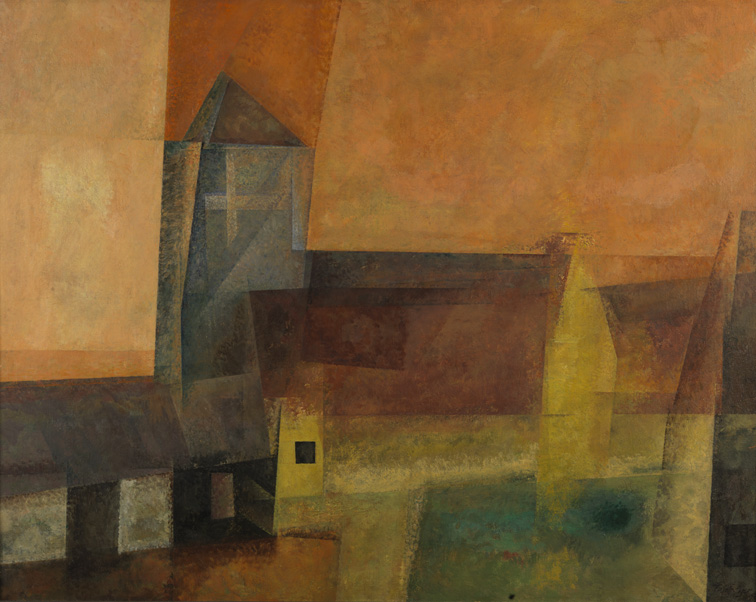
Possendorf
Lyonel Feininger
The son of German immigrants, Feininger returned to Europe to study music and art, supporting himself as a political cartoonist for various German newspapers. After studying at the Berlin Academy he traveled to France in 1906 thanks to the money he earned doing one of the earliest American comic strips, "the Kin-der-Kids" for the Chicago Tribune. In Paris, Feininger fell under the influence of Robert Delaunay's Orphic Cubism, a style marked by contrasting colors and abstract forms. Returning to Germany, he exhibited with the Blaue Reiter group, and his friendship with Paul Klee and Wassily Kandinsky led to his becoming one of the founding members of the Bauhaus School in 1919, led by the architect Walter Gropius. Feininger contributed a woodcut for the cover of the first Bauhaus manifesto.
"Possendorf" depicts a small village near Weimar, the original home of the Bauhaus School. Feininger used geometric planes of greens, browns, and oranges to articulate the structures and space of this image, concentrating a band of light on the church tower. In 1937, Feininger's paintings were included in the infamous "Degenerate Art" show held by the Nazi party to highlight the "corruptness" of avant-garde art. That same year Feininger and his Jewish wife fled Germany to seek safety in America, where they spent the rest of their lives.
Artist
Date of Birth
(1871-1956)
Date
1929
Medium
Oil on canvas
Dimensions
30 5/8 x 38 5/8 in. (77.8 x 98.1 cm.)
Accession #
1951.5
Credit Line
Henry D. Gilpin Fund
Copyright
© Artists Rights Society (ARS), New York / VG Bild-Kunst, Bonn
Category
Subject
More by
We're so excited you're planning to visit PAFA!
Make time for art — visit us Thursday to Sunday.
Before reserving your tickets, please review helpful information about museum hours, accessibility, building access, and special admission programs.
If you have any questions, feel free to reach out to us at visitorservices@pafa.org — we’d love to help!